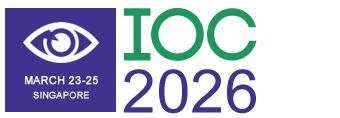Title : Amniotic membrane transplantation and conjunctival autograft combined with mitomycin C for the management of primary pterygium: A systematic review and meta-analysis
Abstract:
Background: Pterygium is a common ocular surface disease. Recurrence is the greatest concern in the treatment of pterygium. Thus, a standardized and effective treatment modality with minimal risk for complications is needed for the management of pterygium. The aim of this systematic review and meta-analysis was to evaluate different tissue grafting options, including conjunctival autograft (CAG) with mitomycin C (MMC), CAG alone, and amniotic membrane transplantation (AMT), for the management of primary pterygium.
Methods: We searched the MEDLINE, EMBASE, and Cochrane Central Register of Controlled Trials databases for relevant studies. We included randomized controlled trials (RCTs) in which CAG + MMC and AMT were compared with surgical excision with CAG alone for the treatment of primary pterygium. The rates of recurrence and adverse events reported in the studies were also evaluated. Risk ratio (RR) was used to represent dichotomous outcomes. The data were pooled using the inverse variance weighting method. The quality of the evidence derived from the analysis was assessed using the Grading of Recommendations Assessment, Development, and Evaluation (GRADE) approach. Risk of bias was assessed using the revised Cochrane riskof-
bias tool for randomized trials.
Results: Twelve RCTs (n = 1144) were deemed eligible and included for analysis. Five RCTs had a low risk of bias, five had some concerns, and two had a high risk of bias. Subgroup analysis showed a statistically significant reduction in the rate of pterygium recurrence after CAG + MMC (RR = 0.12; 95% confidence interval [CI], 0.02–0.63). This outcome was rated as high-quality evidence according to the GRADE criteria. There were insignificant differences between the rates of recurrence after AMT and CAG (RR = 1.51; 95% CI, 0.63–3.65). However, this result was rated as low-quality evidence. Regarding adverse events, patients treated using AMT showed significantly lower rates of adverse events than those treated using CAG (RR = 0.46; 95% CI, 0.22–0.95). However, this finding was rated as low-quality evidence as well. CAG + MMC showed a safety profile comparable to that of surgical excision with CAG alone (RR = 1.81; 95% CI, 0.40–8.31). This result was also rated as low-quality evidence.
Conclusion: A single intraoperative topical application of 0.02% MMC during excision of pterygium followed by CAG has significantly shown to decrease the rate of pterygium recurrence to 1.4% with no severe complications.




